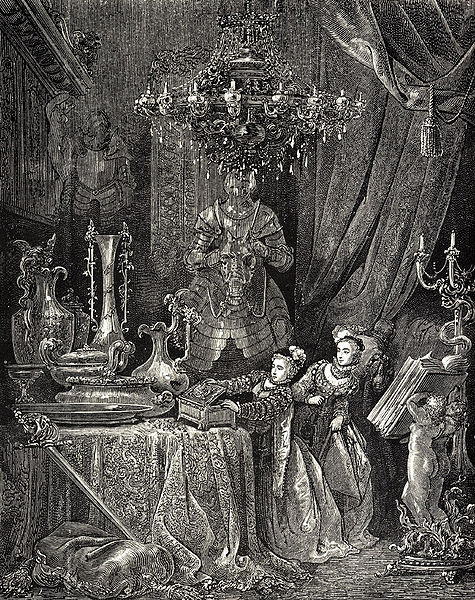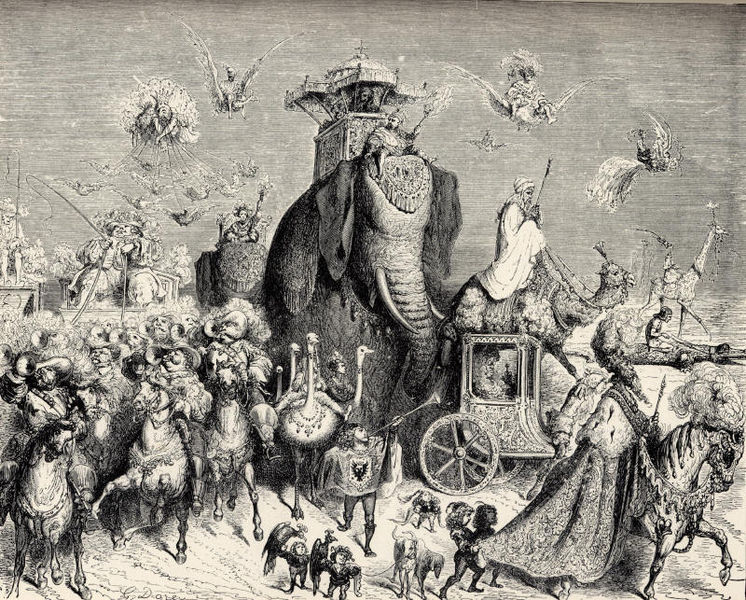(Of potential relevance to Medievalists interested in the merveilleux and Early Modernists interested in fairy tales, and to those working on women’s writing and feminist literature and literary criticism and theory…)
Cecil H. and Ida Green Visiting Professor : Jack Zipes
Folklore and Fairy Tale Scholar at UBC, March 23-27, 2010
 Jack Zipes is one of the world’s leading authorities on fairy tales, writing about and translating them. An internationally renowned scholar and author of more than 50 books on many subjects, he has through his writings transformed research on fairy tales, particularly with respect to how they function in the socialization of readers. His books include Why Fairy Tales Stick: The Evolution and Relevance of a Genre (2006), Relentless Progress: The Reconfiguration of Children’s Literature, Fairy Tales, and Storytelling (2008), Fairy Tales and the Art of Subversion (1985, 2006) and The Enchanted Screen: A History of Fairy Tales on Film (coming, 2010). His translations include The Complete Fairy Tales of the Brothers Grimm (1987), The Fairy Tales of Hermann Hesse (1995), and most recently Lucky Hans and Other Merz Fairy Tales by Kurt Schwitters (2009). Jack Zipes is Professor Emeritus of German and Comparative Literature at the University of Minnesota.
Jack Zipes is one of the world’s leading authorities on fairy tales, writing about and translating them. An internationally renowned scholar and author of more than 50 books on many subjects, he has through his writings transformed research on fairy tales, particularly with respect to how they function in the socialization of readers. His books include Why Fairy Tales Stick: The Evolution and Relevance of a Genre (2006), Relentless Progress: The Reconfiguration of Children’s Literature, Fairy Tales, and Storytelling (2008), Fairy Tales and the Art of Subversion (1985, 2006) and The Enchanted Screen: A History of Fairy Tales on Film (coming, 2010). His translations include The Complete Fairy Tales of the Brothers Grimm (1987), The Fairy Tales of Hermann Hesse (1995), and most recently Lucky Hans and Other Merz Fairy Tales by Kurt Schwitters (2009). Jack Zipes is Professor Emeritus of German and Comparative Literature at the University of Minnesota.
Some of his critical works are available in French (e.g., Fairy Tales and the Art of Subversion: The Classical Genre for Children and the Process of Civilization. Second Revised Edition. New York: Routledge, 2006). Of his many books, apart from the works of scholarship dealing with European folklore, the following are likely to have particular interest for faculty and students in French and Italian studies:
• Beauties, Beasts, and Enchantment: Classic French Fairy Tales, translated with an introduction on “The Rise of the French Fairy Tale and the Decline of France,” New York: New American Library, 1989.
• The Great Fairy Tale Tradition: From Straparola and Basile to the Brothers Grimm. New York: Norton, 2001.
• Italian Popular Tales by Thomas Frederick Crane, edited with an introduction and notes. Santa Barbara, CA: ABC-CLIO, 2001.
• Beautiful Angiola: The Great Treasury of Sicilian Folk and Fairy Tales Collected by Laura Gonzenbach. New York: Routledge, 2003.
• The Robber with a Witch’s Head: The Great Treasury of Sicilian Folk and Fairy Tales Collected by Laura Gonzenbach. New York: Routledge, 2004.
• Beautiful Angiola: The Lost Sicilian Folk and Fairy Tales of Laura Gonzenbach. New York: Routledge, 2006. This is the paperback edition of two volumes published previously in 2003 and 2004, and it includes two additional dialect tales and a revised introduction.
• The Collected Sicilian Folk and Fairy Tales of Giuseppe Pitrè. Edited and Translated with Joseph Russo. 2 vols. New York: Routledge, 2008.
(bibliographical information graciously supplied by Jane M. Flick, Associate Professor Emerita, Department of English, UBC)
Professor Zipes will be presenting talks on the UBC campus and in the greater community during his stay. For full details on his visit and scheduled appearances, see the schedule online. For more information, contact Green College Events.
 GREEN COLLEGE AND ISGP WEEKLY LECTURE
GREEN COLLEGE AND ISGP WEEKLY LECTURE
Radical Visions: Feminist Interpretations of Fairy Tales in Paintings, Sculptures, and Photography
Green College Coach House, 6201 Cecil Green Park Road, UBC
5 – 6:30 pm, Tuesday, March 23, 2010, with reception to follow
Professor Zipes argues that the fairy-tale notion of happiness must be turned on its head if we are to glimpse the myths of happiness perpetuated by the canonical fairy tales and culture industry and if we are to grasp what happiness might mean. In the course of his argument he will situate the work of some talented feminist painters, sculptors, and photographers, Kiki Smith, Joellyn Rock, Claire Prussian, Sharon Singer and others, within the great historical and cultural movement of feminism that has influenced their art and the works of many other innovative female artists and writers in the realm of fairy tales.
SPECIAL LECTURE
Co-presented with the UBC MA in Children’s Literature Program
Utopian Tendencies of Oddly Modern Fairy Tales
Dodson Room #302, Irving K. Barber Learning Centre, 1971 East Mall, UBC
12 – 12:50 pm (followed by discussion), Wednesday, March 24, 2010
Though most people consider fairy tales fascinating relics of the past, they have actually undergone numerous transformations and remain oddly modern even in the twenty-first century. Using some key psychological and philosophical categories from Sigmund Freud and Ernst Bloch, Professor Zipes will discuss why fairy tales remain so important in our lives, and why writers and artists continue to elaborate and re-create utopian and carnivalesque motifs from the tales to re-shape perspectives on possibilities for changing the world.
 ARTS WEDNESDAYS PUBLIC LECTURE
ARTS WEDNESDAYS PUBLIC LECTURE
De-Disneyfying the Fairy-Tale Film
UBC Robson Square Theatre, 800 Robson Street, Vancouver, BC
6 – 7:30 pm, Wednesday, March 24, 2010
Our contemporary concept and image of a fairy tale has been shaped and standardized by Disney so efficiently through the mechanisms of the culture industry that our notions of happiness and utopia are and continue to be filtered through a Disney lens, even if it is myopic. It seems that myopia has come to dominate both reality and utopia, thanks to Disneyfication, or that we are conditioned to view reality and fairy tales through a myopic pseudo-utopian lens. Despite the Disney Corporation’s domination of the fairy-tale film, the Disney productions do not constitute a monopoly. Professor Zipes will explore the different endeavors of filmmakers to develop fairytale films which propose alternatives to Disney standards.

VANCOUVER CHILDREN’S LITERATURE ROUNDTABLE
Discovering Buried Fairy Tales: Adventures of a Scholarly Scavenger
The University Golf Club, 5185 University Blvd, UBC
9 am, Saturday, March 27, 2010 (Registration and coffee from 8 am)
*TICKETED EVENT: For prices and details, see the VCLR website.
All events of this Green Visiting Professorship are open to the public. Space limited at all venues.
Images: Gustave Doré engravings (1867) for Charles Perrault, Contes de ma mère l’Oye (1687). C/o Wikimedia Commons.